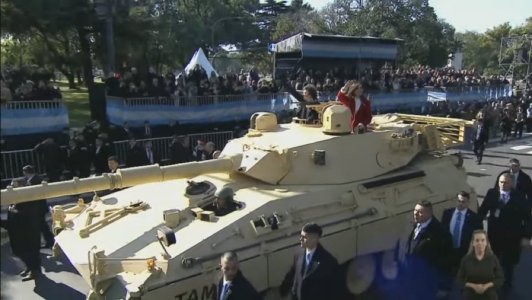Independence Day: What happened on July 9?
This national holiday commemorates the anniversary of this day in the year 1816, when the representatives of the United Provinces of the Río de la Plata officially declared the emancipation from Spain, at a time when the European power was still being fought on the American continent.
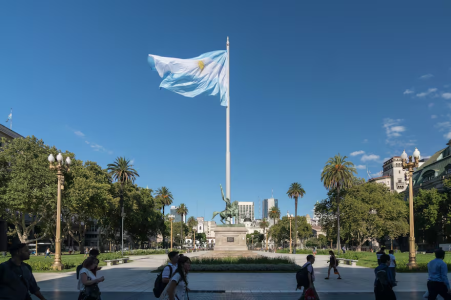
July 9th is the day of Independence in Argentina.Courtesy of BA Heritage
Next Tuesday is a holiday for July 9th , and a great opportunity to explain to the kids how what we know today as Independence Day came about .
Specifically, on July 9, 1816, the Act of Independence was signed by representatives of the United Provinces of the Río de la Plata . This event was the high point of the Constituent Congress of Tucumán , convened by the Directory, a government institution that exercised control of the rebel territories within the former Viceroyalty of the Río de la Plata , with Buenos Aires as its capital.
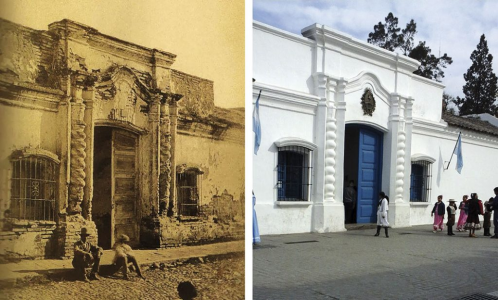
The signing of the Act of Independence took place in the Historic House of Tucumán, which can be visited in San Miguel de TucumánFernando Font - THE NATION
The sessions of the same had begun on March 24 of that year, and continued in the northern province until January 16, 1817, when it moved to Buenos Aires . In May of that year, as recalled by the Ibero-American Encyclopedia , this legislative and constituent body resumed its sessions until April 11, 1820, when it was dissolved after the federal victory in the battle of Cepeda (1820).
What happened on July 9, 1816?
On this date the signing of the Declaration of Independence took place . The event took place within the framework of the Congress of Tucumán , located in San Miguel de Tucumán . As mentioned, this body was convened by the Directory, an institution with effective control of the territories rebelling against the Crown based in Buenos Aires, under the interim direction of Ignacio Álvarez Thomas .The event was presided over by representatives of the United Provinces of the Río de la Plata , at the home of Mrs. Francisca Bazán de Laguna . This venue was called the Historic House or the House of Tucumán , a place that can be visited today.
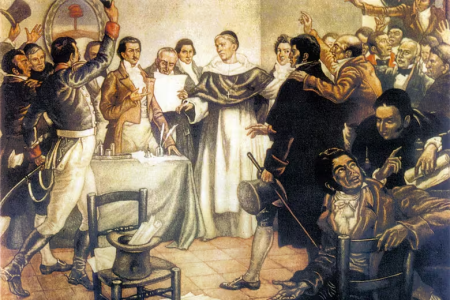
The declaration of independence, July 9, 1816, according to a watercolor by Antonio González Moreno (1941) (Image: National Historical Museum Collection)
During the sessions, the need to establish a new independent nation was discussed , one that would be able to cut ties with the Spanish monarchy , remove the possibility of submission to the Portuguese crown and operate under its own objectives and fulfill its civic duties.
Who signed the Act of Independence
Although the territories that signed this document, promulgated while the royalist troops of Spain were still being fought, were the germ of what is today Argentina , there are some differences in the geography of that territory with what is today our country . For example, three territories associated with what is today Bolivia sent representatives and, only in 1825, Congress gave them the freedom of action that led to the formation of the current neighboring country.Furthermore, the document was not signed by the current territories of Santa Fe, Entre Ríos, Corrientes and Misiones, grouped in the Union of Free Peoples, commanded by José Artigas , who repelled invasions by the Directory (one of the first civil conflicts in what was not yet Argentina) and by Portuguese-Brazilian troops. In the case of the Patagonian provinces, they did not yet exist as such, but were territories practically unexplored by Europeans or their Creole successors, populated by different aboriginal communities.
In summary, the provinces that sent representatives to the Congress of Tucumán were:
- Buenos Aires
- Catamarca
- Cordoba
- Chichas (current Bolivia)
- Charcas (present-day Bolivia)
- The Rioja
- Jujuy
- Mendoza
- Mizque (present-day Bolivia)
- Salta
- San Juan
- San Luis
- Santiago del Estero
- Tucuman
The context of the struggle for independence
In May 1814, King Ferdinand VII of Spain returned to power after the Napoleonic invasions, and set himself the goal of recovering the territories in America that were seeking emancipation. By then, the royalist army was already fighting the independence movements in the region.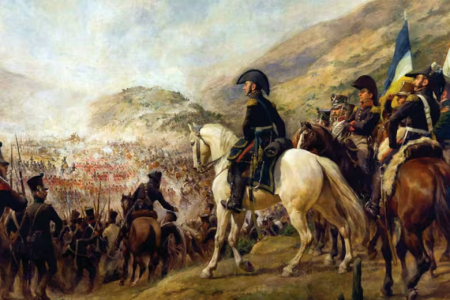
When the Act of Independence was signed, Spain was still being fought in the war of emancipation from the Spanish crown.
The United Provinces decided to unite in opposition to this threat and formed the General Constituent Congress of the United Provinces in South America . To this end, they approached Buenos Aires, the former capital of the Viceroyalty of the Río de la Plata, in order to reach an agreement on their desire for sovereignty.
Who was part of the Declaration of Independence?
Twenty-nine deputies of the Congress of Tucumán signed the Act of Independence . Each of them represented around 15,000 inhabitants. Among them, Francisco Narciso de Laprida , then deputy for San Juan, was the one who presided over the session. The vice president was Mariano Boedo , then deputy for Salta. José Mariano Serrano and Juan José Paso were the designated secretaries.The following deputies, representing the country's provinces, completed the attendance:
- Antonio Sáenz
- José Darragueira
- Fray Cayetano José Rodríguez
- Pedro Medrano
- Esteban Agustín Gascón
- Tomás Manuel de Anchorena
- Manuel Antonio Acevedo
- José Eusebio Colombres
- Eduardo Pérez Bulnes
- José Antonio Cabrera
- Jerónimo Salguero de Cabrera
- Teodoro Sánchez de Bustamante
- Pedro Ignacio de Castro Barros
- Tomás Godoy Cruz
- Juan Agustín Maza
- José Ignacio de Gorriti
- Fray Justo Santa María de Oro
- Pedro Francisco de Uriarte
- Pedro León Gallo
- Pedro Miguel Aráoz
- José Ignacio Thames
- Pedro Ignacio Rivera
- Mariano Sánchez de Loria
- José Severo Malabia
- José Andrés Pacheco de Melo

Día de la Independencia: qué pasó el 9 de julio para chicos
Este feriado nacional conmemora la efeméride de esta jornada del año 1816, cuando los representantes de las Provincias Unidas del Río de la Plata oficializaron la emancipación de España, en un momento donde todavía se combatía a la potencia europea en el continente americano


